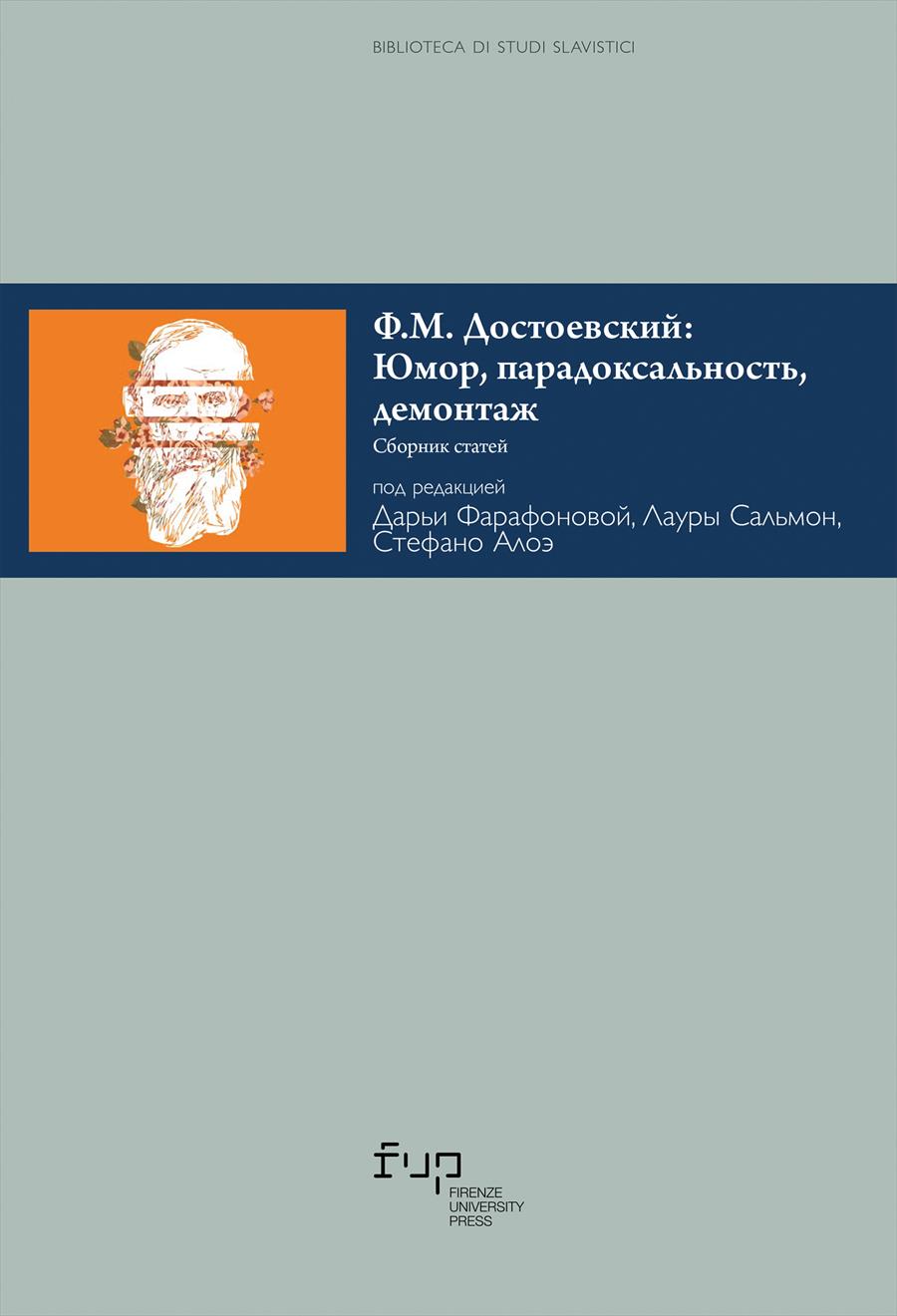- Ф.М. Достоевский: Юмор, парадоксальность, демонтаж
- Edited by Dar'ja Farafonova, Laura Salmon, Stefano Aloe
Деконструктивные практики XIX века (от натуральной школы до Л.Н. Толстого) и Ф.М. Достоевский
- Alexey Kazakov
- © 2023 Author(s) |
- CC BY 4.0
- DOI: 10.36253/979-12-215-0122-3.05
Deconstruction in the 19th Century (from the Natural School to Leo Tolstoy) and Fyodor Dostoevsky. The modern understanding of deconstruction arose from post-structuralism and implies distrust of semblance, the outward appearance of any ideology or structure, together with the search for a hidden interior. Dostoevsky renounces one-dimensionality and shows its deconstructing nature. He considers it a prejudice to believe that disclosing the hidden and forbidden has more “truth” in it, as is evident from his dispute with Tolstoy, who uses the principle of exposing the ignoble background of a supposedly noble national ideology to criticize the “defenders of the Slavic brothers” in Anna Karenina. Dostoevsky refuses to recognize the results of deconstruction (the denial of the declared) as the last and only version of the truth about reality. His approach can be defined as the “deconstruction of deconstruction.”
- Keywords:
- deconstruction,
- Dostoevsky and the Natural School,
- Dostoevsky and Leo Tolstoy,
- specificity of Dostoevsky’s realism,
- artistic model of truth,
Tomsk State University, Russian Federation - ORCID: 0000-0002-9074-231X
- Алексеев, Павел В. 2015. Восток и восточный текст русской литературы первой половины XIX века: Концептосфера русского ориентализма. Диссертация… доктора филолог. наук. Томск: ТГУ.
- Белинский, Виссарион Г. 1956. “Взгляд на русскую литературу 1846 года.” В кн. Виссарион Г. Белинский, Полное собрание сочинений, т. 10. Москва: Изд-во АН СССР.
- Бочаров, Сергей Г. 1987. Роман Л.Н. Толстого «Война и мир». Москва: Художественная литература.
- Виноградов, Виктор В. 1976. “Романтический натурализм (Жюль Жанен и Гоголь).” В кн. Виктор В. Виноградов, Поэтика русской литературы. Москва: Наука.
- Волгин, Игорь Л. 1971. “Нравственные основы публицистики Достоевского («Восточный вопрос» в «Дневнике писателя»).” Известия АН СССР (Серия лит. и яз.) 30: 312-22.
- Гегель, Георг Вильгельм Фридрих. 1969. Эстетика, в 4 тт., т. 2, под ред. и с предисловием Михаила Лифшица. Москва: Искусство.
- Деррида, Жак. 2000. О грамматологии, пер. Н. Автономовой. Москва: Ad marginem.
- Джоунс, Малкольм. 1998. Достоевский после Бахтина. Исследование фантастического реализма Достоевского. Санкт-Петербург: Академический проект.
- Захаров, Владимир Н. 1997а. “Реализм.” В кн. Достоевский: Эстетика и поэтика. Словарь-справочник, сост. Г.К. Щенников, А.А. Алексеев; науч. ред. Г.К. Щенников, 39. Челябинск: Металл.
- Захаров, Владимир Н. 1997б. “Фантастическое.” В кн. Достоевский: Эстетика и поэтика. Словарь-справочник, сост. Г.К. Щенников, А.А. Алексеев; науч. ред. Г.К. Щенников, 53-6. Челябинск: Металл.
- Саид, Эдвард Вади. (1978) 2006. Ориентализм. Западные концепции Востока, пер. с англ. А.В. Говорунова. Санкт-Петербург: Русскiй мiръ.
- Соркина, Дина Л. 1969. “«Фантастический реализм» Достоевского (Статья первая).” В кн. Проблемы идейности и мастерства художественной литературы, ред. Дина Л. Соркина, 182-99. Томск: Изд-во ТГУ. (Учёные записки ТГУ 77).
- Степанян, Карен А. 2010. “Что такое «реализм» и был ли Достоевский реалистом?” В кн. Карен А. Степанян, Явление и диалог в романах Ф.М. Достоевского. Санкт-Петербург: Книга.
- Толстой, Лев Н. 1982. Собрание сочинений, в 22 тт., т. 9. Москва: Художественная литература.
- Шкловский, Виктор Б. 1983. Избранное, в 2 тт. Москва: Художественная литература.
Chapter Information
Chapter Title
Деконструктивные практики XIX века (от натуральной школы до Л.Н. Толстого) и Ф.М. Достоевский
Authors
Alexey Kazakov
Language
Russian
DOI
10.36253/979-12-215-0122-3.05
Peer Reviewed
Publication Year
2023
Copyright Information
© 2023 Author(s)
Content License
Metadata License
Bibliographic Information
Book Title
Ф.М. Достоевский: Юмор, парадоксальность, демонтаж
Editors
Dar'ja Farafonova, Laura Salmon, Stefano Aloe
Peer Reviewed
Number of Pages
222
Publication Year
2023
Copyright Information
© 2023 Author(s)
Content License
Metadata License
Publisher Name
Firenze University Press
DOI
10.36253/979-12-215-0122-3
ISBN Print
979-12-215-0121-6
eISBN (pdf)
979-12-215-0122-3
eISBN (epub)
979-12-215-0123-0
Series Title
Biblioteca di Studi Slavistici
Series ISSN
2612-7687
Series E-ISSN
2612-7679
